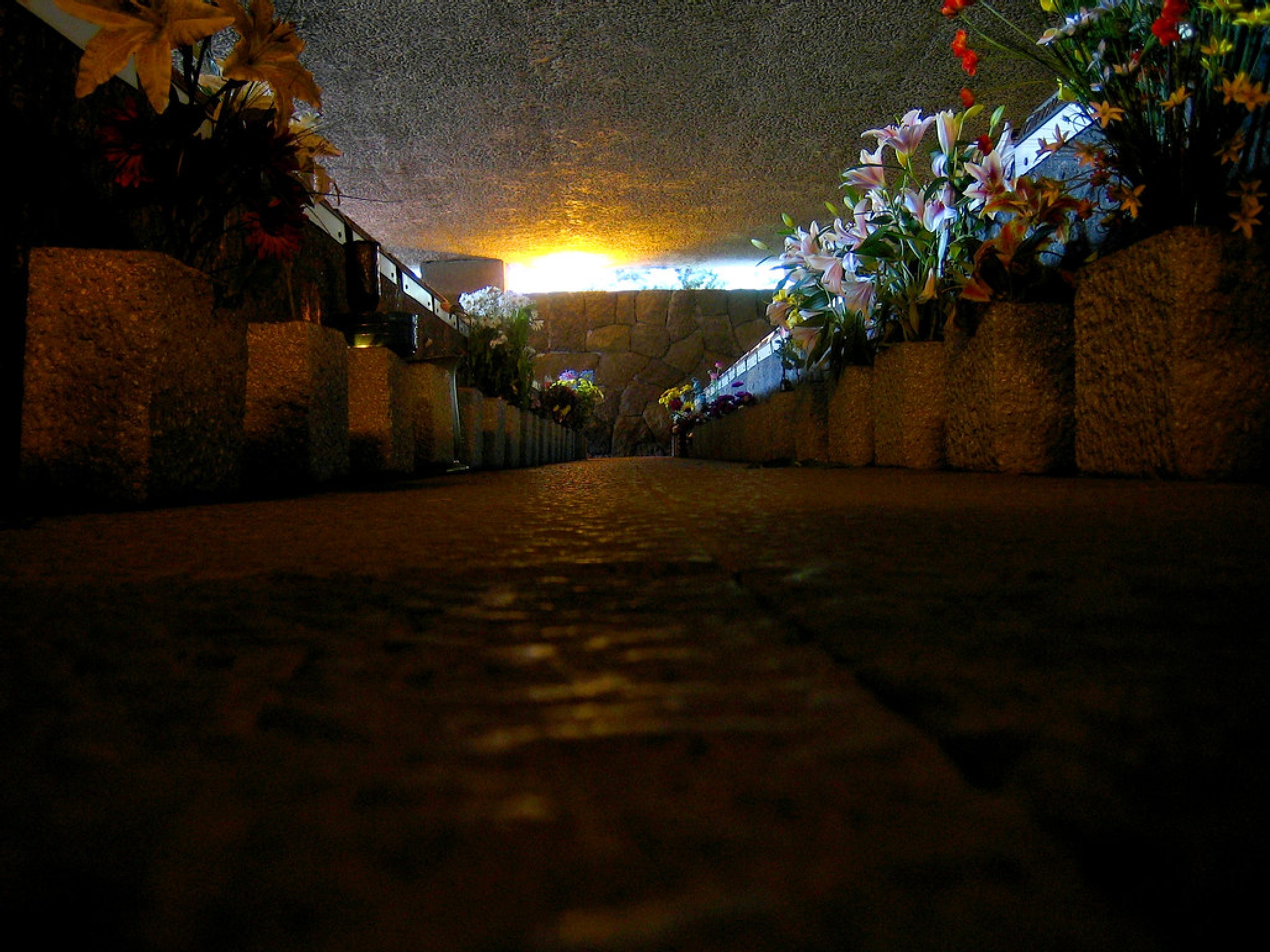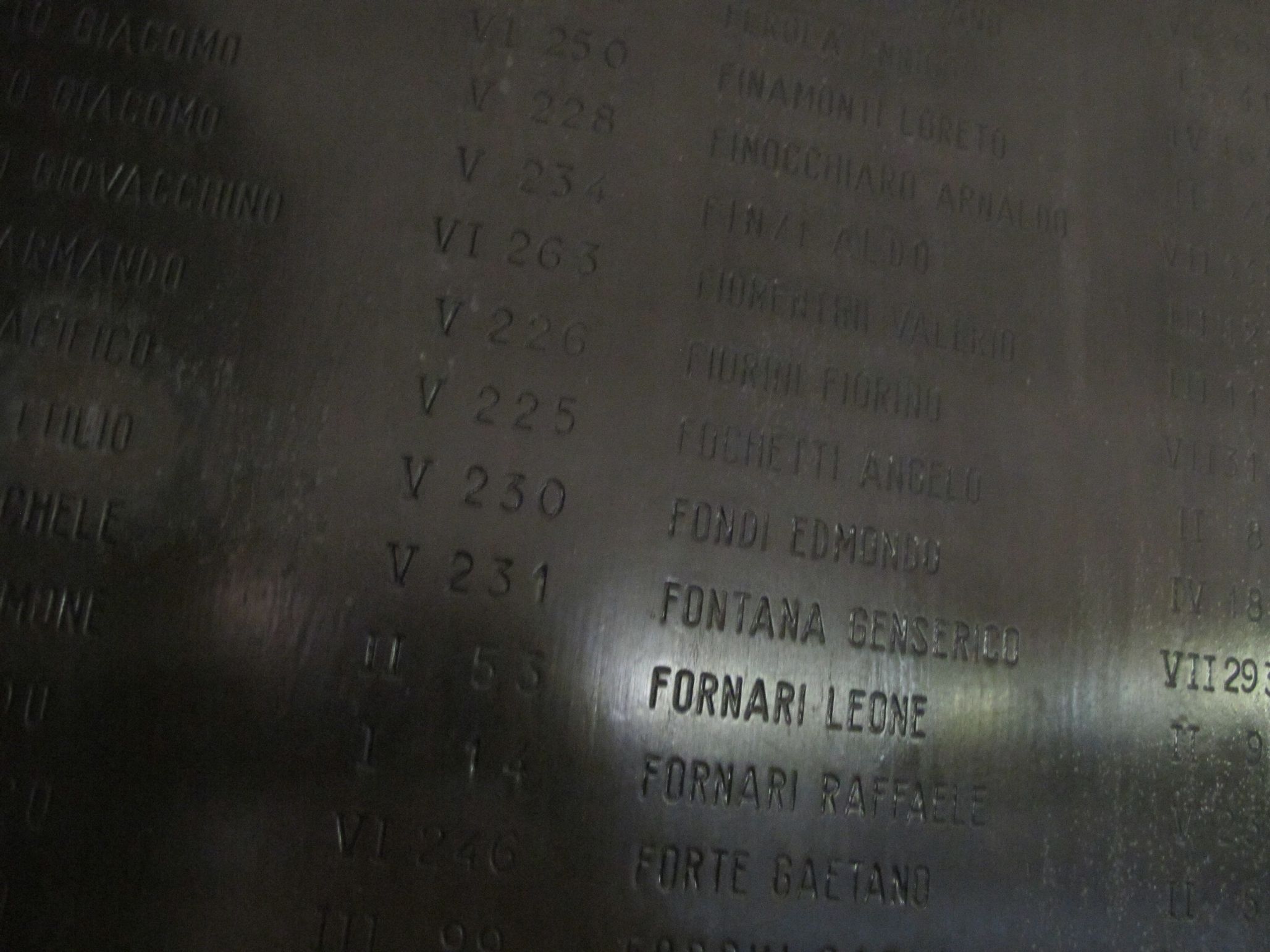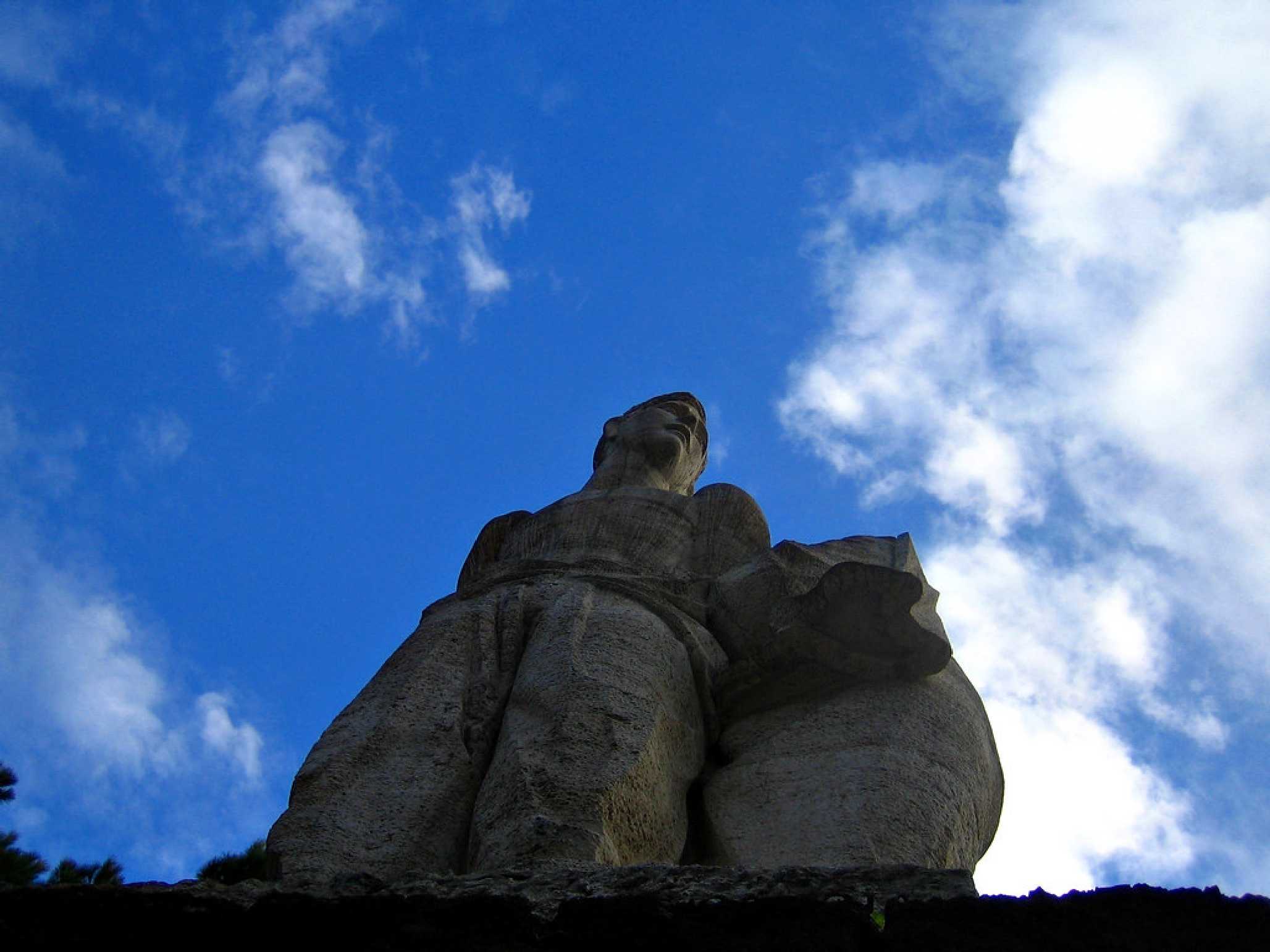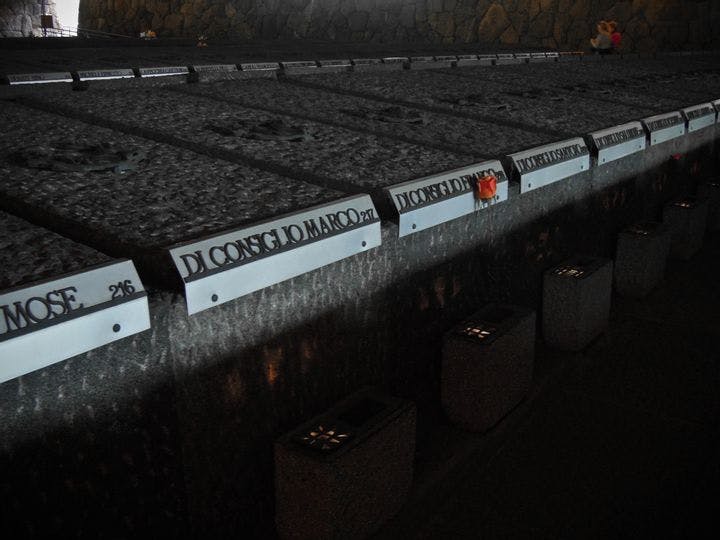Winter 2015
Murder in the Ardeatine Caves
– John Surico
How a 70-year-old massacre continues to haunt a nation.
Ten Italians for every German killed.
That was the order given to German SS soldiers on March 24th, 1944, just a few months before Allied forces would land on the beaches of Normandy and eventually bring one of the bloodiest wars in mankind’s history to an end.
Seventy years later, the anniversary is regarded as a day of remembrance for Italians; citizens and politicians visit a small set of hills outside Rome to lay wreaths for the dead, hanging their heads in commemorative grief. It is a bloody blemish in Italian history books, when their supposed allies became murderers and the innocent lost their lives. It remains an atrocity that has gone unpunished to this day, and an investigation into what happened reveals a web of post-war scrambling to hide the past. This was the massacre inside the Ardeatine Caves.

By 1944, with the remnants of former Benito Mussolini’s fascist empire up for grabs, Italy had become something of a free-for-all between the Allies and Axis powers. The Allies’ Italian campaign was long underway, with troops landing on the southern beaches of Sicily and Calabria, pushing up north into enemy territory. In the northwest, Nazi Germany had direct control of certain lands, which were technically part of Repubblica Sociale Italiana, or the Italian Social Republic — the second attempt at a fascist government, installed after Mussolini was ousted as Il Duce a year earlier. After remaining in prison for a few months, Mussolini was freed by loyalists and re-installed as head of the shrinking puppet government, whose focal point was the city he viewed as Italy’s pride and glory: Rome.
Weaknesses in power became evident both at home and abroad, as Nazi soldiers patrolled the streets of Rome to keep the peace through violence. The cracks were widening, and the Italians knew the time to strike was now. So, during the day, a rogue group of Italian communist partisans seized the opportunity and attacked a Gestapo station in the Via Rasella neighborhood, leaving 33 Nazi officers and soldiers dead. It was March 23rd.
That evening, the Gestapo and the Wehrmacht, the Nazi military, plucked Italian men off the streets at random. They were detained for the night, awaiting the unknown fate that the next day held. There were 335 of them, the youngest just 15 years old. None had any involvement in the attack.
At around 3:30 PM the next day, the hordes of men were led to the Ardeatine Caves outside of Rome. There, they were sorted into groups of five and marched by torchlight down through the abandoned mineshafts. Quintet by quintet, the Italian men were lined up facing the cold stone walls, and shot execution-style.
In detailed accounts published by the German news outlet Der Spiegel, the German SS soldiers had drank the afternoon away before shooting the men, leaving some dead and others barely breathing. The next five entered, climbing over the mounds of their dead countrymen. It became an assembly line slaughter:
Line up. Sit down. Point. Shoot. Push to the side. Repeat.

For those who were shot but hung on by a thread, the end came soon enough. Once the hours-long massacre was over, the SS soldiers used dynamite to permanently close the cave's entry, leaving the bodies behind as they drove off into the night, heading back toward the Italian capital. The dead remained undiscovered until long after the fall of fascism.
It is still unclear as to why the Nazis decided to brutally gun down a citizenry they once called brethren. The Jewish general interest magazine Tablet has hinted at an anti-Semitic motive: approximately 75 of the Italian men came from Jewish descent. And in Nazi propaganda and literature, the party line had always tied the communist agenda to the Jewish race, portraying the socialist ‘threat’ as a secret plot hatched by shadow Zionist forces to infiltrate and destroy the Aryan race. With the agenda of those behind the partisan attack to blame, it became all too easy for this to happen.
Others view the massacre as a desperate, reactionary whiplash as the Allies began surrounding Rome — a last-minute attempt by the Nazis to instill fear in the Italians out of fear for their own survival. One of the victims was a well-known Sardinian folk singer, Galvino De Lunas; why target him unless you aim to intimidate the public? They were in control, and blood would have to be spilled as proof.
In the early days of post-war Italy, the Christian Democrats took power in the First Republic to great fanfare, promising better relations with the Western world and the newly formed NATO as the Iron Curtain fell over Europe. Capitalism’s breath of fresh air would come in to mask the country’s horrific past. So, as a diplomatic promise for a more prosperous tomorrow, one that would eventually lead to the European Union, Italy assured the fractured Germany that it would not extradite the criminals that had fled to Italy to escape Nuremberg. The fear was that, if this were to happen, other countries would want Italian criminals to face the same justice as their Nazi counterparts. By doing so, Italy hoped to avoid igniting a legal battle of supranational proportions.
Thus, in 1958, the Italian government went to work locking up all the case files on the Fosse Ardeatine massacre, as it is officially known to Italians. The chief investigator, Massimo Tringali, stopped off at the German embassy in Rome to give them a new directive: the massacre was to be forcefully forgotten from the collective consciousness of both nations. As one German ambassador later recalled, “This was not desired, [Tringali] said, for reasons having to do with domestic politics.”
It took historians nearly 60 years to discover an exchange from 1959 between the German Embassy and the country’s Foreign Ministry, in which German officials followed Italy’s lead in covering up what had happened outside of Rome. The adviser on the case, Kurt Von Tannstein, called the massacre an “affair” that had to be “[put] to rest, as desired by both the German and Italian side." Interestingly enough, Tannstein had also been an integral part of Hitler’s inner circle, serving as the Nazi Foreign Minister for years until the Fuhrer’s demise in 1945.

This was the all-too-unfortunate reality of post-war Germany. Like with Tannstein, many ex-Nazi officials sneaked their way back into the government and society they had once dominated, claiming they had been innocent and under the powerful sway of Hitler. This included Carl-Theodor Schutz, the head of the firing squads on that day outside of Rome, and Kurt Winden, who helped choose the innocent Italian victims for execution. According to Der Spiegel, Schutz joined the German intelligence agency BND after the war, and Winden lived comfortably as the head of the in-house legal department of Deutsche Bank in Frankfurt. Both denied the accusations, and were never charged.
The only SS officer to be charged at the time for the Ardeatine Caves massacre was a man by the name of Herbert Kappler, the head of the Gestapo police forces in Rome in 1944. It was his men that were attacked by the Italian partisan forces, and it was his men who would later perpetuate the mass killing in the caves. He was sentenced to life in prison right after the war ended.
The next servings of justice came decades later, in 1998. According to information provided by the United States Holocaust Museum, it was that year when SS officers Erich Priebke and Karl Hass were finally charged with involvement in the Ardeatine Caves massacre, and sentenced to life in prison. Up until then, the two had been living in the public with the same names and resumes, facing virtually no repercussions for their actions decades before.
By the time the indictment came around, Hass was long dead after having escaped to and retired in Argentina, so only Priebke had to suffer for his past. Priebke, who lived in Italy after the war ended, was the officer who checked off each Italian man’s name for death as he entered the caves, never to see daylight again. In a television interview with ABC’s Sam Donaldson in 1994, he seemed unfazed by his own actions, saying simply, “An order was an order,” and clearing his own name by saying, “I never shot anybody.” This lack of emotion garnered support for the 1997 trial of Hass and him. Priebke was put under house arrest in Rome, just miles from his horrific crime, until he passed away this past October at the age of 100.
What happened at the Ardeatine Caves, now a national memorial, still haunts the Italians to this day, dividing those who consider the preceding partisan attack by their countrymen to have been a just uprising against tyranny, and others who believe the massacre was provoked by their countrymen’s irresponsible behavior.
Regardless, 335 innocent Italian men, both young and old, lost their lives on that fateful day 70 years ago. And when the Nazi Party members, loyalists, and sympathizers were hauled off to face trial in Nuremberg — with many of the real criminals out roaming free — the bodies inside those caves remained lost under debris, waiting for justice that would never come.
* * *
John Surico is a freelance journalist based out of New York. His reporting can be found in The New York Times, Wall Street Journal, VICE, and elsewhere.
Cover photo courtesy of Flickr/Luca Di Ciaccio
